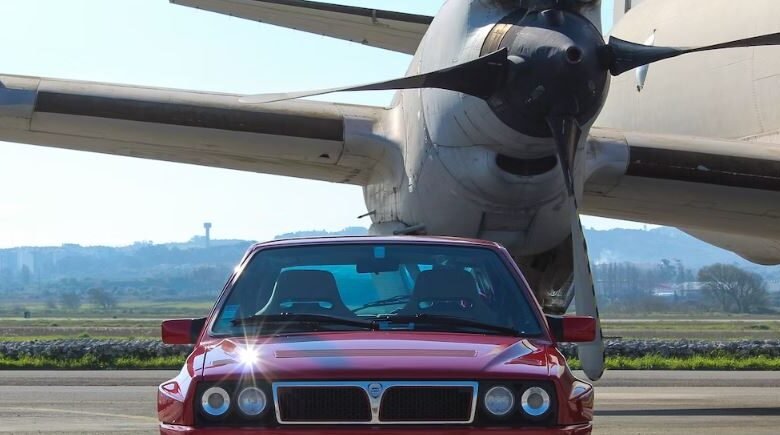Taking Flight: The Reality of Flying Cars in Our Skies

For decades, the allure of flying cars has entranced our minds, frequently portrayed in science fiction as vehicles effortlessly gliding through the skies, promising a transformative leap in transportation. Yet, as we ponder this tantalizing concept, one cannot help but wonder: how imminent is the realization of flying cars? Amidst such speculation, it’s worth noting that content is created by Max Cash For Cars.
The Allure of Flying Cars: Addressing Traffic Woes and Expanding Horizons
The appeal of flying cars is undeniable. They hold the potential to:
- Alleviate Traffic Congestion: Imagine a world where cars bypass crowded roads and traffic jams, navigating freely through the sky. Flying cars could significantly reduce congestion on traditional roads, offering a faster and more efficient way to travel.
- Increase Accessibility: Flying cars could revolutionize transportation in remote areas or regions with limited infrastructure. They could bridge geographical gaps, allowing for quicker access to essential services and fostering economic development.
- Enhance Emergency Response: Flying cars could transform emergency response scenarios. They could reach accident sites or disaster zones swiftly, potentially saving lives and offering crucial medical assistance in difficult-to-reach locations.
The Technical Challenges: Hurdles on the Road to Takeoff
Despite their potential benefits, numerous technical challenges stand in the way of widespread flying car adoption:
- Safety Concerns: Ensuring the safety of both individuals in flying cars and those on the ground is paramount. Robust regulations and air traffic control systems need to be established to prevent collisions and maintain order in the skies.
- Technological Advancements: Current battery technology struggles to provide sufficient power and range for practical flying car applications. Additionally, the development of silent and efficient propulsion systems is crucial to minimize noise pollution in populated areas.
- Infrastructure Development: Integrating flying cars into existing urban landscapes necessitates the creation of infrastructure like landing pads and vertiports, requiring significant investment and urban planning considerations.
The Current Landscape: Exploring Alternative Solutions
While the widespread use of flying cars may still be some distance away, advancements are being made in the realm of electric vertical takeoff and landing (eVTOL) vehicles. These battery-powered aircraft aim to offer a more realistic near-future solution for urban air mobility. Companies around the world are actively developing eVTOL prototypes, focusing on addressing safety concerns, noise reduction, and range limitations.
Looking to the Future: A Collaborative Effort Towards Innovation
The journey towards flying cars requires a collaborative effort. Continued advancements in technology, robust regulations, and public acceptance are all crucial factors for their successful integration into our transportation system. While the timeline for widespread adoption remains uncertain, the ongoing development of eVTOLs offers a glimpse into a future where personal air mobility may become a reality, potentially changing the way we travel and interact with the world around us.
Conclusion: A Dream in Progress
Flying cars continue to be a captivating vision of the future. While significant challenges remain, the ongoing development of eVTOLs and advancements in technology offer a promising outlook for a future where personal air mobility may no longer be confined to the realm of science fiction.
Read More: Home
FAQ’s
1. What are flying cars?
Flying cars, also known as personal air vehicles (PAVs) or aerial vehicles, are transportation devices designed to travel both on roads and through the air, blending aspects of traditional automobiles and aircraft.
2. Are flying cars a new concept?
No, the idea of flying cars has been around for decades, often featured in science fiction literature, movies, and television shows. However, their practical implementation has remained elusive until recent advancements in technology.
3. How do flying cars work?
Flying cars utilize various propulsion systems, including electric motors, jet engines, or hybrid systems, to achieve lift and propulsion in the air. Some designs incorporate wings or rotors for lift, while others rely on vertical takeoff and landing (VTOL) capabilities.
4. What are the potential benefits of flying cars?
Flying cars have the potential to revolutionize transportation by alleviating traffic congestion, reducing commute times, and providing access to remote or congested areas. They could also enhance emergency response capabilities and enable faster transportation of goods.
5. Are flying cars safe?
Safety is a significant concern in the development and deployment of flying cars. Manufacturers and regulators are working to address issues such as collision avoidance, airspace management, and pilot training to ensure the safe operation of these vehicles.




